
As a kid, I loved to play with the dirt drying in mud puddles. I’d pick up the shards that formed and made mud pies—probably my first attempt at cooking. What I didn’t know then, but I’m sure my mother did, as she tried to launder the muddy clothes I gave her, was that dirt contained minerals that contained pigments that would color cloth.
Long before my childhood experiments came the Mali tradition of mud cloth, called bogolanfini. Cotton cloth is woven in narrow strips and then sewn together to make a larger piece of cloth. The cloth is mordanted in a tannic tea made from leaves and branches of a local tree and then dried and painted with mud that has been gathered and fermented for several months. The mud is left to dry and cure, rinsed, and repeated several times to darken the color. The traditional Bogolanfini is designed with symbolism, each cloth telling the story of the community. Mud cloth is still made in Mali for the tourist trade and international clothing and home furnishing designers.

The technique I use for making mud fabric incorporates fresh soy milk, which is common in the Japanese tradition. It acts as sizing for the fabric and also as the medium to create the paint from powdered pigment. With several weeks of curing, the soy protein oxidizes to create a long lasting bond between the pigment and the fabric.
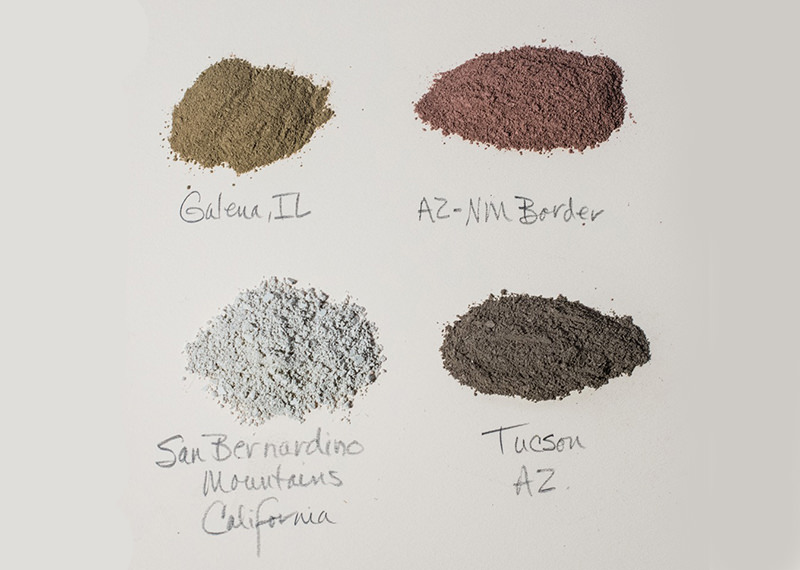
Examine your dirt. What color is it I use clay from my Midwest garden, sand from California, garden soil from Tucson, and red clay from the border of Arizona and New Mexico. You can also purchase earth pigments from around the world online. I used linen fabric, but cotton is equally appropriate. Allow yourself time—a couple months—for the project. I used my first cloth, embellished with stitching to make covers for journals. It would also make beautiful pillow cushions or even framed wall art.
Step 1: Make Earth Pigment

Place 1/2 cup dirt or clay in a quart jar, bearing in mind that clay yields more pigment. Fill it up with water, and stir with a long-handled spoon or chopstick to distribute the mud into a mixture. Let settle for a couple minutes and pour off the upper 2/3 of the liquid into another jar. Discard the debris in the bottom.
Add water to the top, stir, let settle and pour off upper 2/3 again. Repeat one more time to settle out all the debris and sand. Let sit overnight.
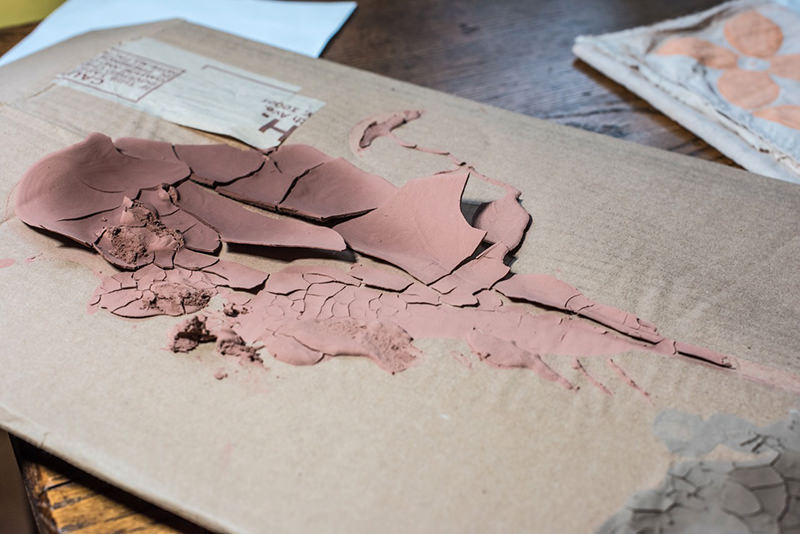
Pour off the clear liquid and discard. You need to dry the mud. Here are three ways to do it:
- Place the mud in a shallow bowl and let the moisture dehydrate naturally, which will take a week or more depending on your weather or indoor conditions.
- Spread the mud out onto a disposable pie tin and bake in the oven at 200 degrees F for 2 to 3 hours.
- Spread the mud out onto cardboard, which is what I generally do. The cardboard absorbs the excess moisture and the mud dries in a few days.

Scrape the dried mud onto a smooth surface—I use thick glass shelving salvaged from an old bookcase. Grind it into a powder with a glass muller. Stored in airtight jars, in which will last forever.
Step 2: Scour the Fabric
This step removes any oils or chemicals used in manufacturing. Simmer for 1 hour in soapy water—1 teaspoon synthropol or Dawn dish soap per gallon of water. Rinse well and air dry.
Step 3: Make Fresh Soy Milk
Soak 1/4 cup soy beans in 2 cups water overnight Drain and rinse the beans. Place in blender with 2 cups water, and blend for 3 minutes.
Drain through clean dish cloth, catching the milk in a bowl and squeezing the remaining bean crumbles to get all the milk out of them. Refrigerate leftovers and use within 2 weeks.
Step 4: Pretreat Cloth To Size
Place 1½ cups soy milk in a large bowl, and soak the cloth in the milk for about 20 minutes. Squeeze out the milk and hang the cloth to air-dry overnight.
Step 5: Paint
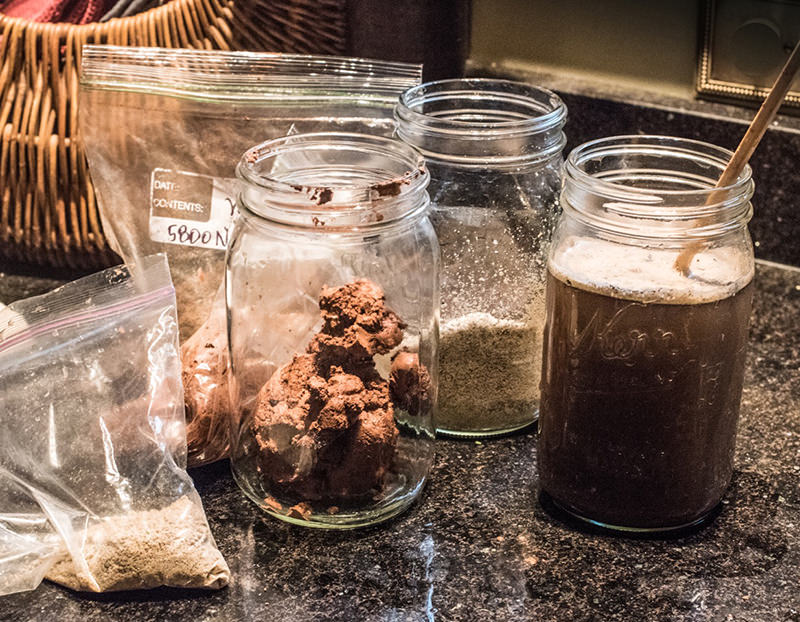
Place a teaspoon of mud powder on a smooth surface, and mix in about 1 teaspoon soy milk, grinding it together into a smooth paste. Add additional soy milk with an eye dropper or by dipping your brush into the soy milk as you work.

I also use a stencil to put a design on the fabric and stamps, painting the pigment on the stamp each time before pressing it onto the fabric.
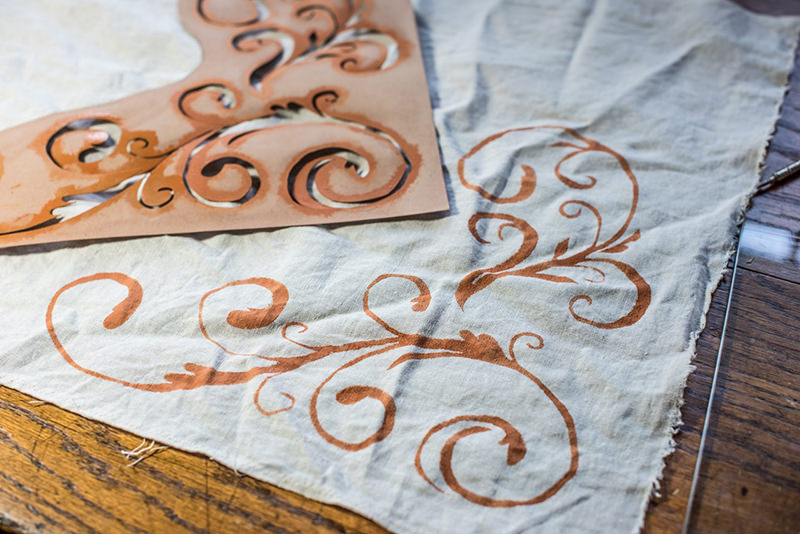
Step 6: Cure
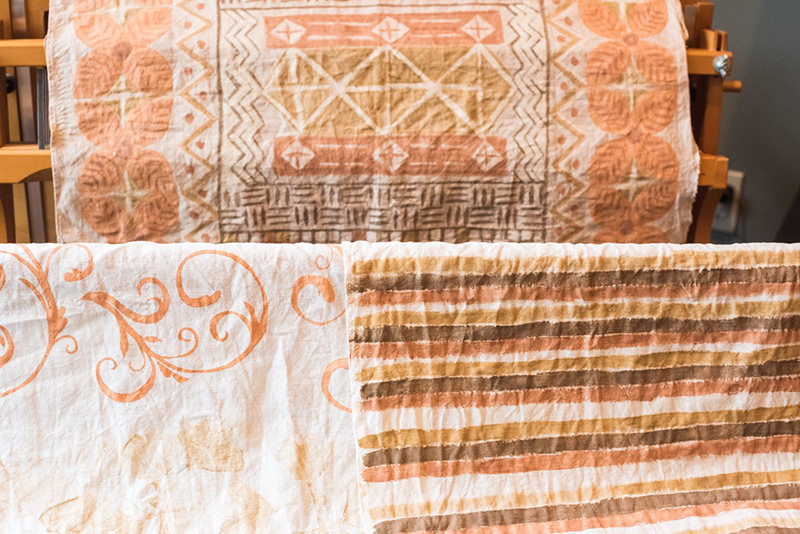
Hang your painted cloth in a warm dry place for a minimum of 3 weeks and for as long as 3 months. Rinse in warm water and line dry before using.
Be a child again—play in the mud and make something wonderful!




